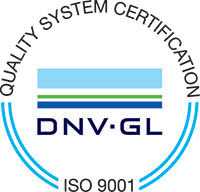Mechanical polishing and buffing cannot be viewed as an adequate substitute for electropolishing in most applications due to the embedded abrasives and compounds, exposed grain structure of the metal, and the lack of the non-particulating, non-contaminating, and non-outgassing characteristics of an electropolished surface.
A mechanically polished metal surface yields an abundance of scratches, strains, metal debris and embedded abrasives. Mechanical polishing fails to remove inclusions, but also tends to push them further into the surface and even increase them by further pickup of abrasive materials which can lead to future points of corrosion. In contrast, the electropolishing process results in a surface which is completely featureless. It reveals the true crystal structure of the metal without the distortion produced by the cold-working process that always accompanies mechanical finishing methods.
Differences in Electropolishing and Metal Finishing
The difference between electropolishing and mechanical finishing is often not readily obvious to the unaided human eye, particularly if both are polished to the same micro-inch finish. The extraordinary advantages of the surface finish produced by electropolishing leap forward, however, when the metal is viewed under high magnification. In contrast, finishing processes using abrasives or other cutting or burnishing action, regardless of how small the amount of work, always distorts the metal surface.
The differences are much more than simply topographical. The damage associated with cold working penetrates deeply into the metal; likewise, abrasives become embedded in the surface. The mechanical strength of the surface is lowered significantly by the cold working that accompanies simple cutting operations. For example, the application of a mechanical finishing process to steel having a tensile strength of 100,000 psi can leave a surface skin of worked metal possessing only a tensile strength of only 35,000 psi.
Burnishing
Burnishing metal by lapping, buffing or coloring processes decreases microinch roughness and improves the image-defining quality of a surface, but it never completely removes the debris and damaged metal caused by mechanical polishing. Burnishing cannot be viewed as an adequate substitute for electropolishing in most applications.
In summary, any mechanically produced surface (ground, polished, buffed, lapped, honed, etc.) produces a work hardened, disturbed and damaged grain layer approximately 0.001 inch thick. This is accompanied by a scratched, sheared, and torn surface contaminated with embedded abrasives and compounds. Its importance depends on its application. From a cosmetic appearance standpoint, these effects may be unimportant. For high purity applications, e.g., semiconductor or pharmaceutical, particles and contaminants can be of utmost importance affecting purity of product and yield. Often it takes a SEM photomicrograph at very, very high magnification to show these effects - but it is there.
 Delstar
Delstar
